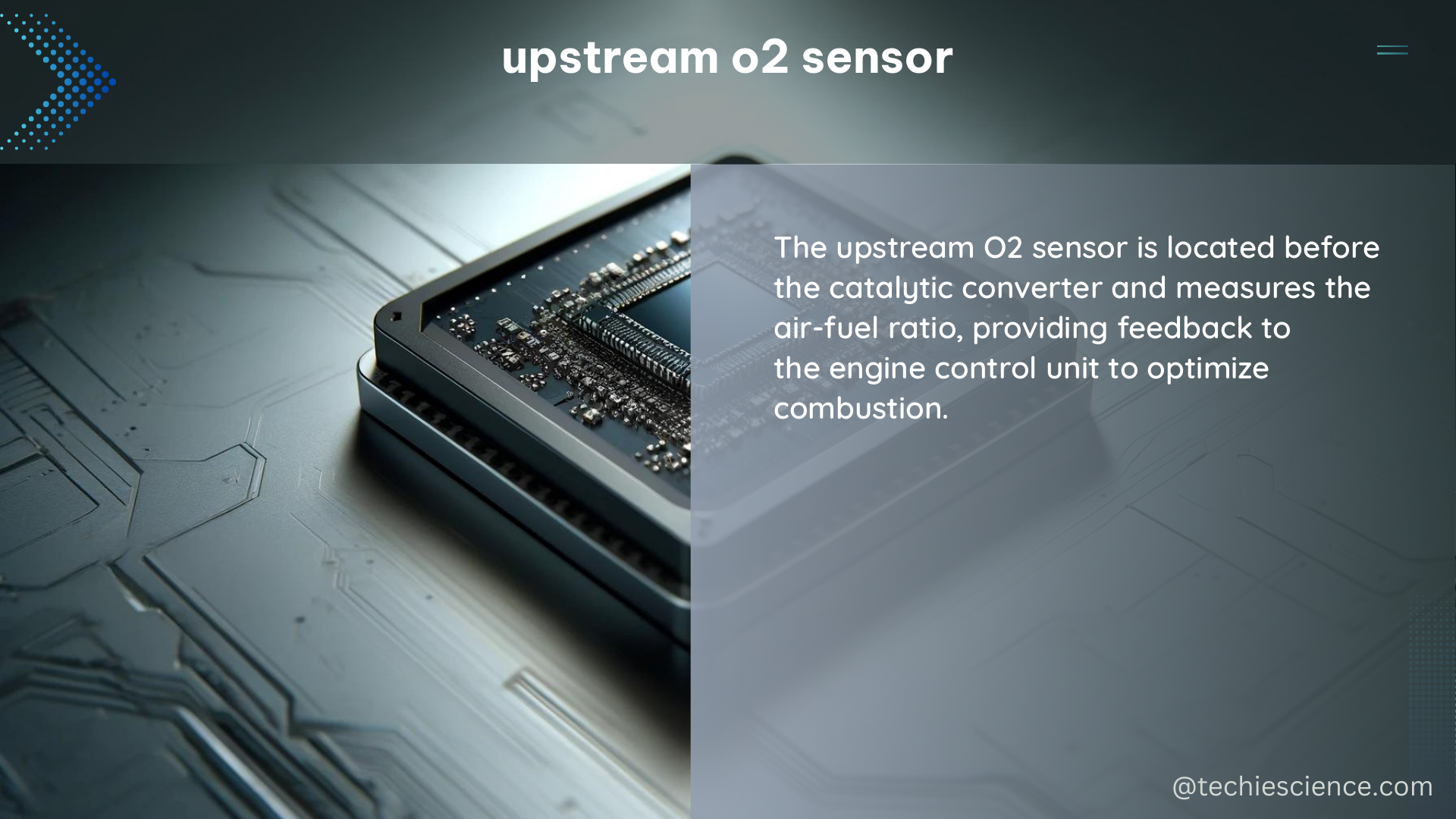The upstream oxygen (O2) sensor, also known as the pre-catalyst sensor, is a critical component in a vehicle’s exhaust system. It measures the amount of oxygen in the exhaust gases before they enter the catalytic converter, providing essential information to the engine control unit (ECU) for optimizing the air-fuel mixture and minimizing harmful emissions.
Understanding the Upstream O2 Sensor
The upstream O2 sensor generates a voltage signal that varies with the oxygen content in the exhaust gases. A healthy O2 sensor should cycle between 0.1 volts (lean condition) and 0.9 volts (rich condition), allowing the ECU to make precise adjustments to the air-fuel ratio.
Sensor Types: Narrowband vs. Wideband
There are two main types of O2 sensors: narrowband and wideband.
Narrowband Sensors:
– Provide basic information about the exhaust’s oxygen content
– Operate within a limited air/fuel ratio range, typically between 14.7:1 and 15:1
Wideband Sensors:
– Offer more precise data, enabling better air-fuel ratio control
– Have an additional O2 pumping cell to regulate the oxygen present in the sensing element
– Can measure a much wider air/fuel ratio range, typically from 10:1 to 18:1
Sensor Operating Temperature
When testing an O2 sensor, it’s crucial to ensure that the sensor has reached its operating temperature of 600 degrees Fahrenheit (315 degrees Celsius). This temperature is necessary for the sensor to provide accurate and reliable readings.
Sensor Signal Characteristics
A properly functioning O2 sensor should exhibit the following signal characteristics:
- Cycling between 0.1 volts and 0.9 volts, indicating lean and rich conditions, respectively
- Cycling at least once per second, showing three cross counts on the scan tool PID
Causes of O2 Sensor Failure

Upstream O2 sensors can fail due to various factors, including:
- Contamination:
- Excessively rich fuel mixture condition
-
Oil blow-by in older engines
-
High Temperatures:
-
Exposure to extreme heat in the exhaust system
-
Wear and Tear:
- Gradual deterioration over time
Symptoms of a Failing O2 Sensor
A failing upstream O2 sensor can cause the following issues:
- Illumination of the check engine light
- Poor fuel economy
- Rough engine idle or misfiring
- Sluggish engine performance
Diagnosing and Replacing the Upstream O2 Sensor
When diagnosing and replacing an upstream O2 sensor, follow these steps:
- Check the Heater Resistance:
-
Measure the resistance of the sensor’s heater circuit, which should typically be between 2-6 ohms.
-
Inspect the Electrical Connector:
-
Examine the connector for any damage or dirt, which can affect the sensor’s performance.
-
Verify the Sensor Reading:
-
Use a four or five-gas emission analyzer to ensure the sensor is reading correctly.
-
Common Fault Codes:
- P0135: Heater circuit malfunction
- P0175: System too rich
- P0713: Sensor circuit intermittent
- P0171: System too lean
-
P0162: Sensor circuit malfunction
-
Replacement Procedure:
- Follow the manufacturer’s instructions for the proper replacement of the upstream O2 sensor.
Importance of Regular Maintenance
Regularly testing and maintaining the upstream O2 sensor is crucial for ensuring optimal engine performance, fuel efficiency, and emissions control. By addressing any issues with the sensor promptly, you can avoid more costly repairs and maintain the overall health of your vehicle’s exhaust system.
Conclusion
The upstream O2 sensor is a vital component in a vehicle’s exhaust system, providing essential data to the ECU for air-fuel ratio control. Understanding the sensor’s operation, types, and common failure modes can help you diagnose and address any issues effectively. By following the proper testing and replacement procedures, you can ensure the longevity and optimal performance of your vehicle’s upstream O2 sensor.
References:
– Making Sense of Your Sensors: Oxygen Sensor
– FORScan: Read O2 Sensor Data
– How to Test an Oxygen Sensor

The lambdageeks.com Core SME Team is a group of experienced subject matter experts from diverse scientific and technical fields including Physics, Chemistry, Technology,Electronics & Electrical Engineering, Automotive, Mechanical Engineering. Our team collaborates to create high-quality, well-researched articles on a wide range of science and technology topics for the lambdageeks.com website.
All Our Senior SME are having more than 7 Years of experience in the respective fields . They are either Working Industry Professionals or assocaited With different Universities. Refer Our Authors Page to get to know About our Core SMEs.